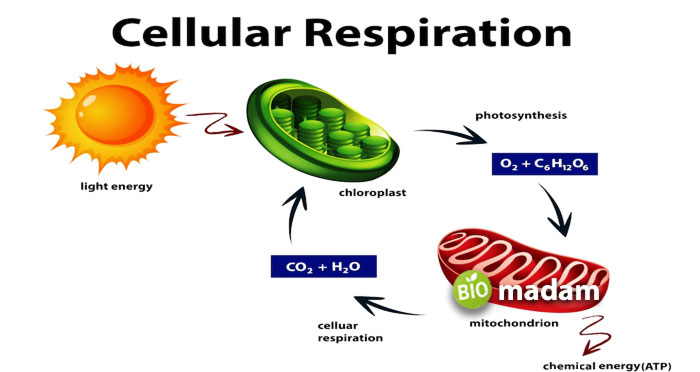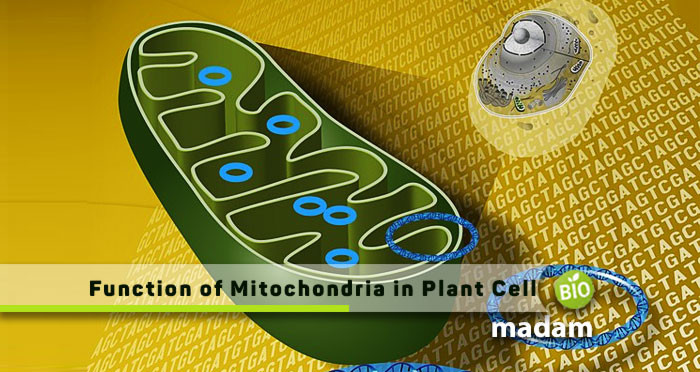Recently updated on December 30th, 2025 at 10:52 pm
Mitochondria, widely known as the cell’s powerhouse, are a critical part of all eukaryotic cells. They contribute to energy production within the cell, which is essential for all cellular functions. The main function (production of ATPs) is the same in animal and plant cells. However, mitochondria play a different role in plants.
Keep reading to learn about the function of Mitochondria in the plant cell.
Location and Structure of Mitochondria
Mitochondria are double-membrane-bound organelles present in the cytoplasm, sometimes confused with cytosol. The outer membrane is smooth, while the inner membrane has compartments. It also contains a gel-like material called the matrix. The membranes of mitochondria contribute to the production of ATPs that provide energy to the cell. The number of mitochondria in different cells varies according to the needs. For example, muscles, the brain, and the liver have a lot of mitochondria to keep the body in good shape.

Basic Functions of Mitochondria
- Mitochondria contribute to the development of cells by providing energy to the cell for mitosis and meiosis.
- They help liver cells detoxify ammonia and eliminate toxins.
- Mitochondria help in the production of different hormones and blood components.
- Adequate functioning of mitochondria ensures a proper concentration of calcium ions in the cell.
- They regulate the metabolic activities within the cell.
Function of Mitochondria in Plant Cell
Respiration is the main function of the mitochondria in the plant cell besides ATP production through oxidative phosphorylation. The composition of mitochondria in plant cells is comparatively more complex than in animal cells, and it follows unique pathways to perform photosynthesis. One of the most important functions of mitochondria in plant cells is its connection to environmental stress. The changes in stress-responsive genes define particular signals from the mitochondria. Moreover, mitochondria respond to the harsh environment in specific manners, including energy delivery, mitochondrial processes, and support in photosynthesis.
Metabolite Transportation
The membranes of the mitochondria and cisternae vary in their permeability considerably. Most molecules can pass through the outer membrane to reach the inner-membrane space. Alternatively, the inner membrane comprises selective transporters that allow the passage of only small molecules or compounds. The membrane’s selectivity regarding molecule selection contributes significantly to mitochondrial functions. Various carriers transport different molecules throughout the mitochondria, including amino acids, organic acids, nucleotides, and inorganic phosphates. Mitochondrial inorganic phosphate carriers and adenine di- and tri-nucleotide carriers perform the functions in plants. Amino acid carriers transport amino acids such as lysine, arginine, ornithine, and histidine.
Photosynthetic Support
Mitochondria play a major function in photosynthesis in plants, especially in harsh environments. Photosynthetic carbon capture takes place through cooperation between organelles. Mitochondria have a critical role in photosynthesis in high-intensity light. The rapid transfer of electrons from NADH into the water through the electron transport chain influences the fast photosynthetic rates. The balance between photosynthesis and respiration determines plant growth. Thus, plants with low respiration rates exhibit slower growth due to low energy. Mitochondria may contribute to a better photosynthesis rate by improving the energy supply.
Cell Survival
Mitochondria help the cell survive under stress through the alteration of metabolic pathways. Various cellular responses regulate tolerance mechanisms in stressed plants. These may include cellular metabolite pools, protein turnover rates, ROS species abundance, etc. These phenomena are directly related to mitochondrial processes via changes in the central metabolic pathway. It may occur due to their demand for an instant supply of ADP: ATP cycling regulated by respiratory oxidative phosphorylation. The protein turnover rate changes depending on whether the plant is stressed or unstressed. Conditions like osmotic stress, drought, and heat stress may lead to these changes. The cellular ATP produced by the electron transport chain is consumed during photosynthetic carbon reduction. Thus, mitochondrial ETC supplies ATP to the roots and shoots for all cellular processes throughout the day and night. Thus, the mitochondrial function supports the survival of plants in stress conditions.

Tolerance to Unfavorable Soil
Mitochondria also contribute to building tolerance in plants, specifically due to root-specific stress, including toxic soil conditions and low oxygen. Mitochondria in the root tissue produce ATPs through oxidative phosphorylation, and the low oxygen solubility may lead to dramatic fluctuations in cellular oxygen concentrations. It mainly occurs through changes in soil drainage due to rainfall in rainfed and irrigated systems. In such situations, mitochondria move from the classical TCA cycle toward amino acid metabolism. The ejection of isocitrate and citrate eliminates aluminum toxicity due to their chelating properties. High metal toxicity involves mitochondrial ROS signals.
The Bottom Line
Organelles such as mitochondria and chloroplasts are critical for plant cells as they perform essential processes. Mitochondria are the powerhouse of the cell and provide energy for cellular functions. However, in plant cells, the function of mitochondria is beyond the energy production process. They contribute to photosynthesis and ensure cell survival in plants. Mitochondria change their regular pathway according to the changes from unstressed to stressful conditions.
FAQs
What are the 3 functions of mitochondria?
Mitochondria regulate the metabolic activities in the cell, produce ATPS for cellular functions through oxidative phosphorylation, and help produce various hormones, blood and plasma components.
What are mitochondria in plants?
Mitochondria are complex double-membrane bound organelles responsible for providing energy for most activities within the cell. It also helps regulate energy supply during stressed conditions and ensures cell survival.
Why mitochondria is called power plant?
Mitochondria in plants are known as powerhouses as they release energy from food through cellular respiration. They act as the powerhouse of energy packet in both animal and plant cells.
Do mitochondria have DNA?
You might be surprised that mitochondria have their own DNA and chromosomes. While most of the DNA is contained within the nucleus, mitochondria have some DNA within their structure. This DNA material is called mtDNA.
Who discovered mitochondria?
Physiologist Albert von Kolliker discovered mitochondria in 1856. The organelles were not first named mitochondria and were called “bioblasts” by Richard Altman in 1886. However, Carl Benda named them Mitochondria twelve years later, in 1898.

Anna has completed her degree in Pharmacy from the University of Hawaii. She is serving as a research assistant in a pharmaceutical company. She had a great interest in writing blogs, traveling to different parts of the US, and trying delicious recipes in her spare time.

